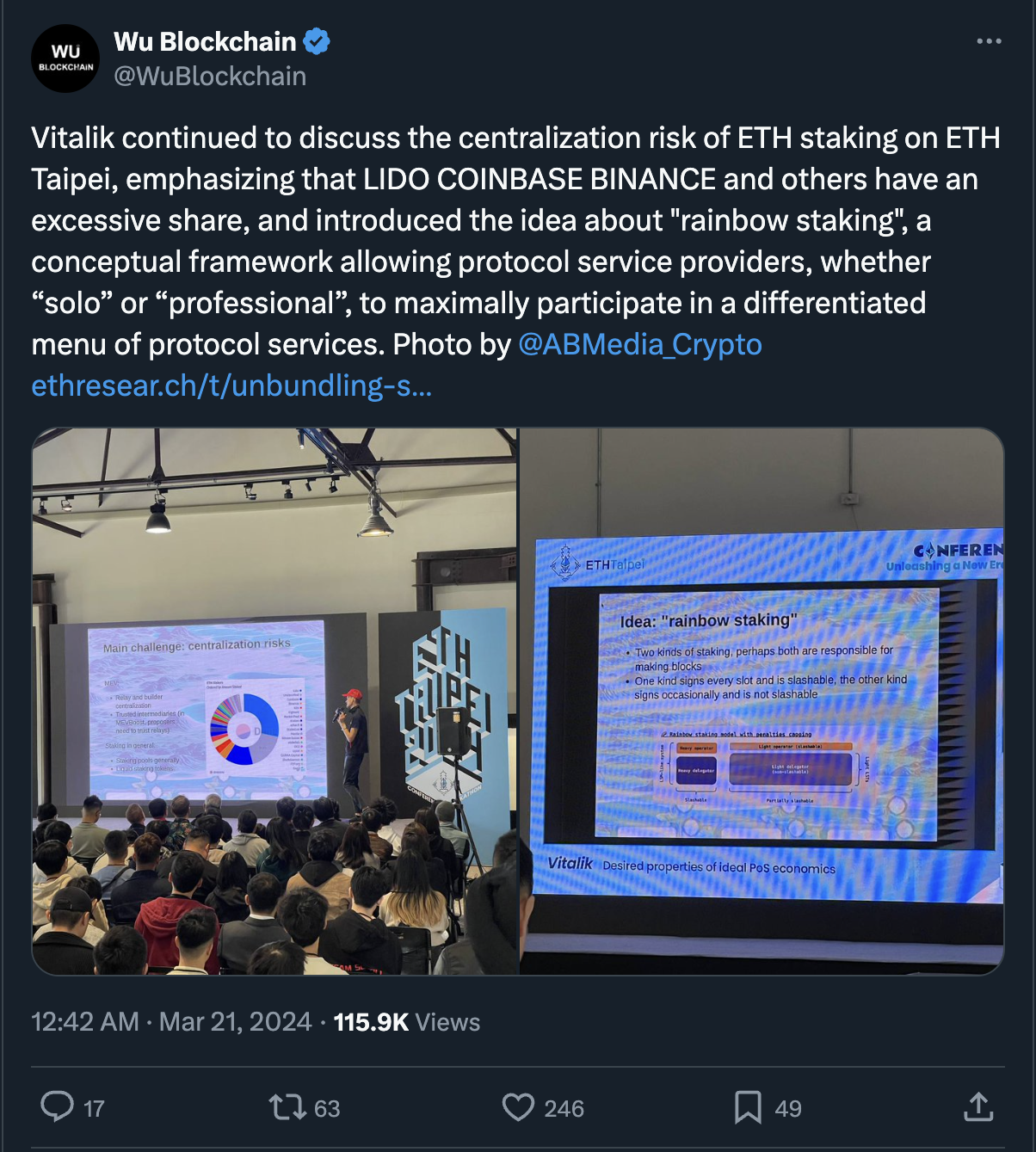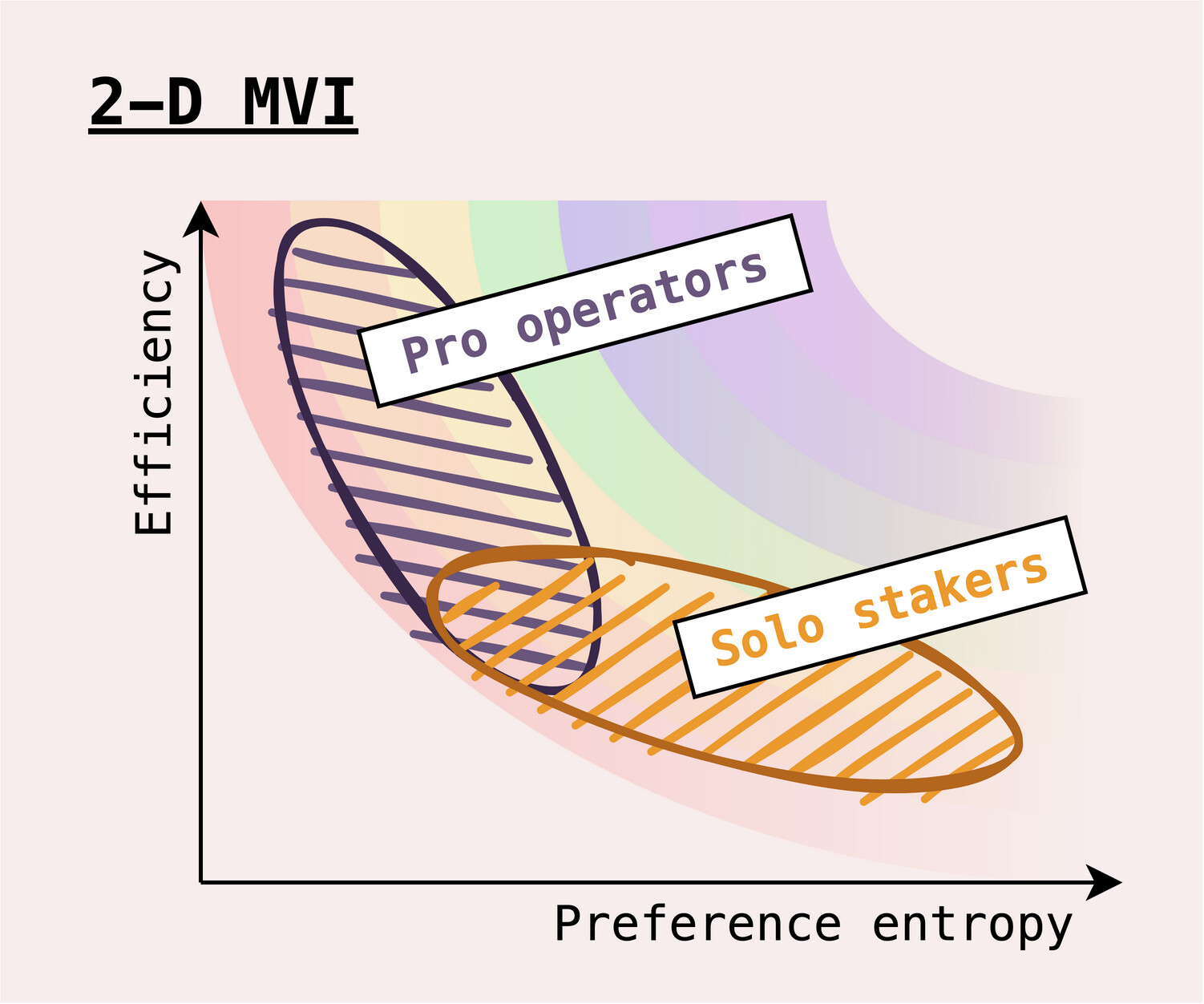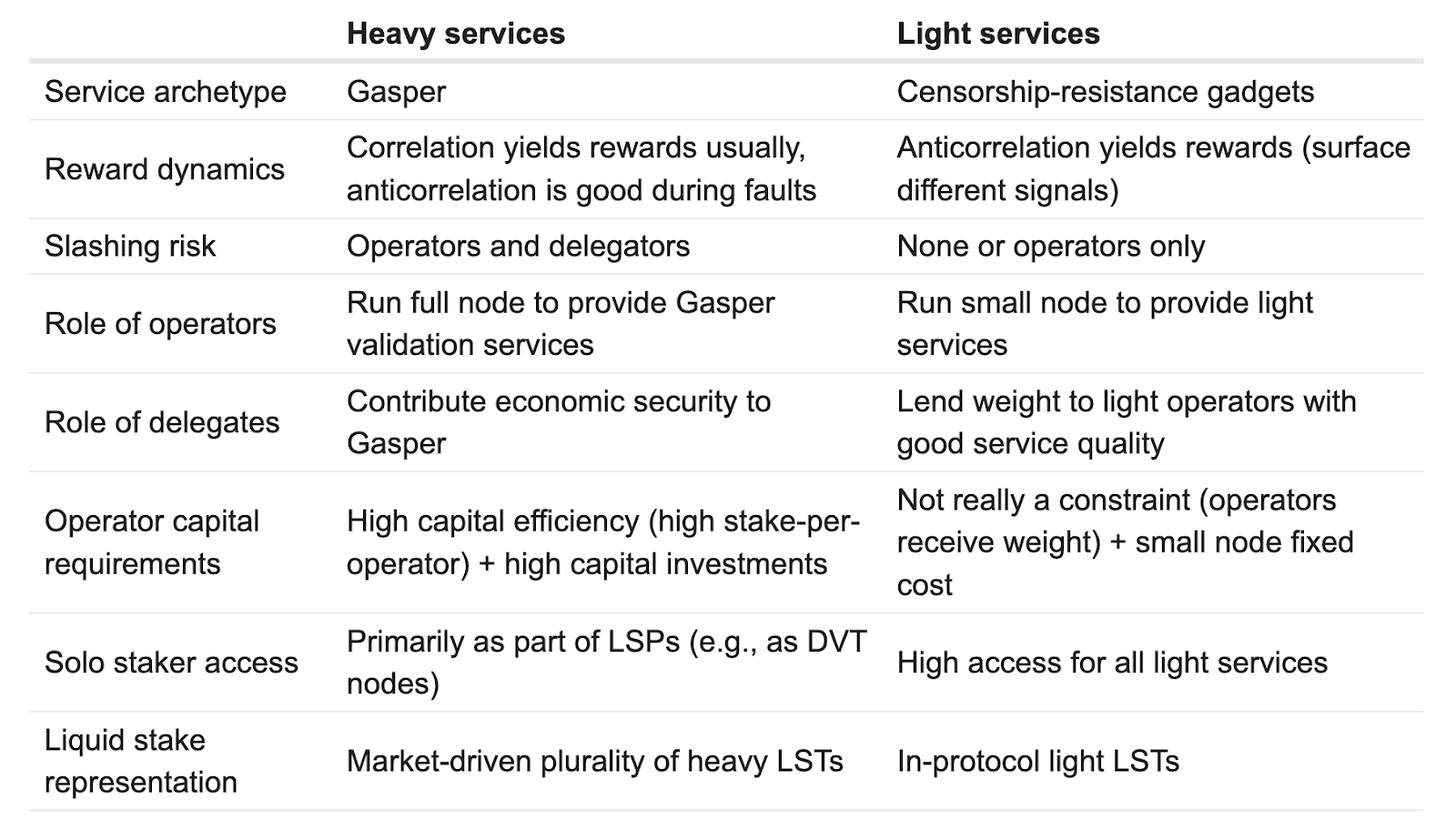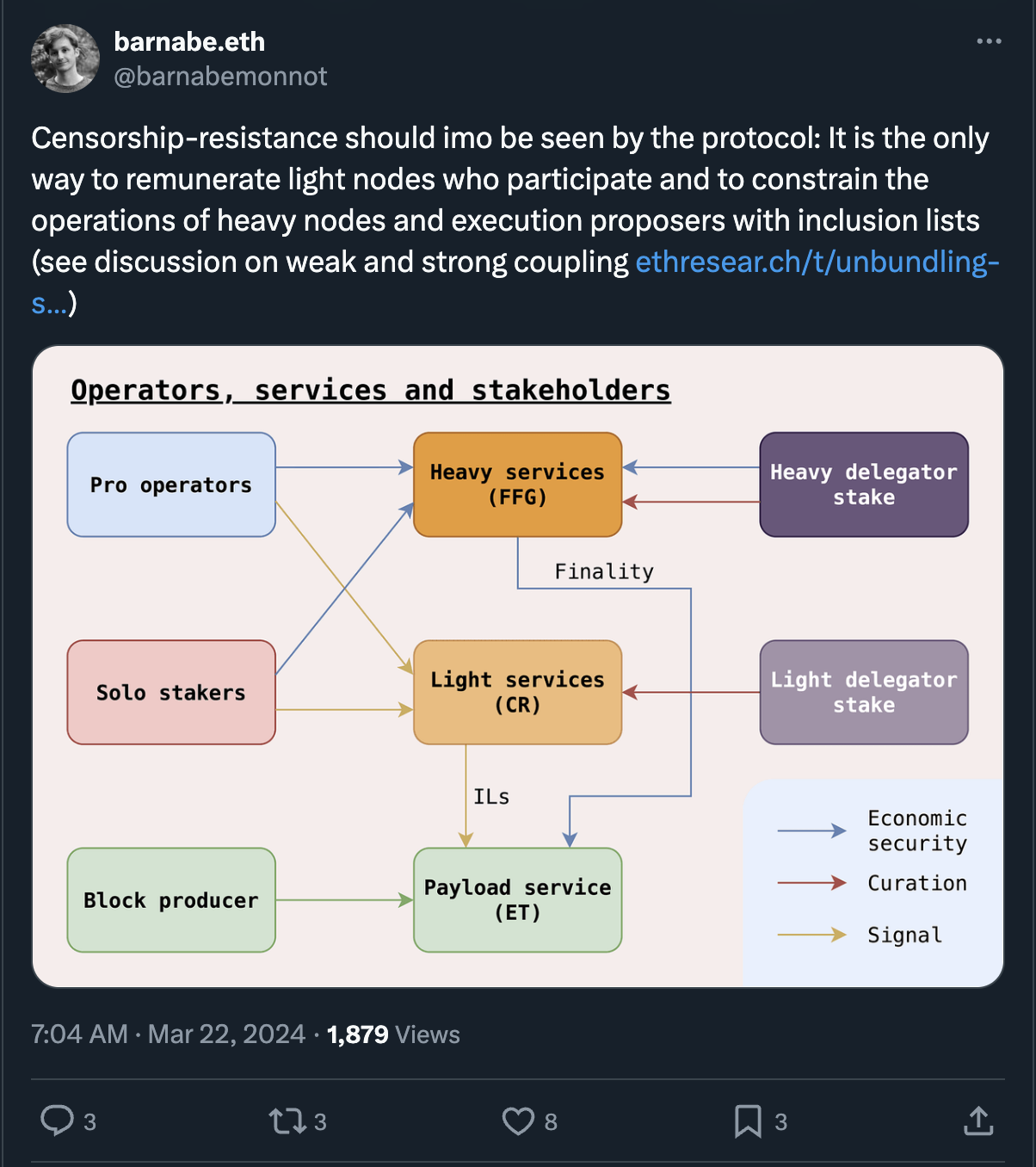In his talk at ETHTaipei, #Ethereum's founder Vitalik Buterin presented Rainbow Staking as a novel approach to mitigate growing centralization concerns around staking. The initiative seeks to balance 'heavy' and 'light' services, emphasizing the critical role of individual stakers. However, it has sparked discussions in the community on its complexity, implementation challenges, and effect on network participation.

(X post)
Buterin acknowledged centralization risks posed by “staking in general” and “liquid staked tokens” on the Ethereum network. He highlighted the lack of solo stakers, attributing this to technical challenges, such as running your own node, and financial constraints, like not having more than 32 ETH.
To counter these issues, he introduced Rainbow Staking, a new staking concept designed to optimize reward distribution and enhance network resilience. “The idea here is that you explicitly split up into two kinds of staking, and you call it heavy staking and light staking,” Buterin said.

(Source)
"Professional operators are well-suited to provide heavy services due to their sophistication along many dimensions (economies of scale, capital requirements, knowledge, reputation). Meanwhile, solo stakers are well-suited to provide light services due to their high preference entropy, surfacing idiosyncratic signals to the protocol. The two groups overlap where heavy services earn credibility from the participation of solo stakers, or where light services earn efficiency from the participation of heavy operators." (Barnabé Monnot, Research Scientist at Ethereum Foundation)
Traditionally overshadowed by larger staking pools, solo stakers under Rainbow Staking gain recognition for contributing to network resilience. Acting as a buffer against potential failures of larger operators, they play a crucial role in sustaining network activity during such downtimes.

(Source)
Thus, Rainbow Staking introduces a "two-dimensional Minimum Viable Issuance (2-D MVI)" mechanism, encouraging broader participation and striving for a more inclusive economic model. This strategy aims to replace the singular focus on resource competition with a diversified model, enhancing the network's competitive landscape.

(Thread)
The Rainbow Staking model has sparked discussions within the community regarding its feasibility and potential impact on the Ethereum network, particularly in terms of security and the balance between individual and pooled staking.
“The biggest downside I see to your proposal is that it is complex, difficult to migrate to, and challenging to predict second-order effects. The first two points might not have any alternative other than defining a clear specification. For the last point, I would urge more research into areas such as tokenized claims, restaking, etc.” (Matt Stam, Founding Engineer at Succinct)
Buterin admits that further research and development are needed before Rainbow Staking might become a viable design for staking on Ethereum. He noted, however: “To me, the biggest questions here are not even technical; they’re philosophical.”
Although the full implications of this new staking model are yet to be fully understood, it reflects Ethereum's commitment to exploring innovative approaches that support its growth and sustainability.

